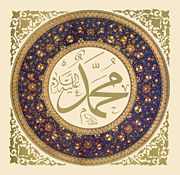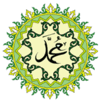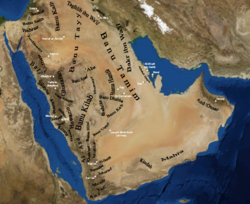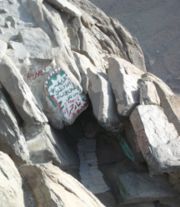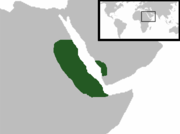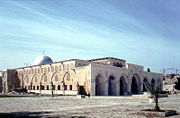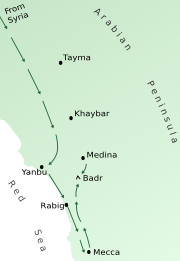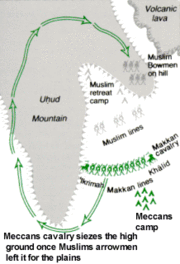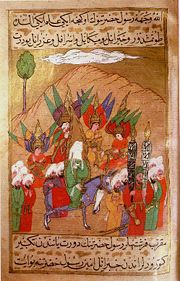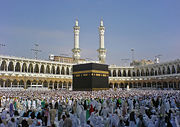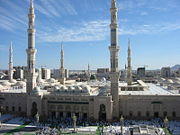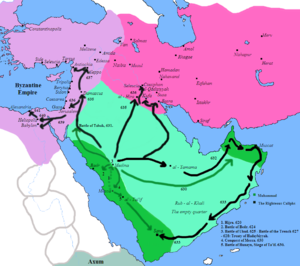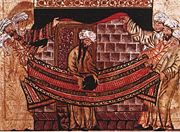Muhammad
2008/9 Schools Wikipedia Selection. Related subjects: Religious figures and leaders
|
Life Career Interactions with Perspectives |
Muhammad ibn ‘Abdullāh (Arabic: محمّد; Transliteration: Muḥammad; IPA: [mʊħɑmmæd̪]; pronunciation ; also spelled Mohammed or Muhammed) (ca. 570 Mecca – June 8, 632 Medina), is the central human figure of the religion of Islam and is regarded by Muslims as the messenger and prophet of God (Arabic: الله Allāh), the last and the greatest in a series of prophets of Islam. Muslims consider him the restorer of the uncorrupted original monotheistic faith ( islām) of Adam, Abraham, Moses, Noah and other prophets of Islam. He was also active as a diplomat, merchant, philosopher, orator, legislator, reformer, military general, and, for Muslims and followers of several other religions, an agent of divine action.
Born in 570 CE in the Arabian city of Mecca, he was orphaned at a young age and was brought up under the care of his uncle. He later worked mostly as a merchant, and was first married by age 26. Discontented with life in Mecca, he retreated to a cave in the surrounding mountains for meditation and reflection. According to Islamic beliefs it was here, at age 40, in the month of Ramadan, where he received his first revelation from God. Three years after this event Muhammad started preaching these revelations publicly, proclaiming that " God is One", that complete "surrender" to Him (lit. islām) is the only way ( dīn) acceptable to God, and that he himself was a prophet and messenger of God, in the same vein as Adam, Noah, Abraham, Moses, David, Jesus and other prophets in Islam.
Muhammad gained few followers early on, and was met with hostility from some tribes of Mecca; he was treated harshly and so were his followers. To escape persecution Muhammad and his followers migrated to Medina (then known as Yathrib) in the year 622. This event, the Hijra, marks the beginning of the Islamic calendar. In Medina Muhammad managed to unite the conflicting tribes, and after eight years of fighting with the Meccan tribes, his followers, who by then had grown to ten thousand, conquered Mecca. In 632 a few months after returning to Medina from his Farewell pilgrimage, Muhammad fell ill and died. By the time of his death most of the Arabian Peninsula had converted to Islam and he united the tribes of Arabia into a singular Muslim religious polity.
The revelations (or Ayats, lit. "Signs of God"), which Muhammad reported receiving until his death, form the verses of the Qur'an, regarded by Muslims as the “word of God”, around which his religion is based. Besides the Qur'an, Muhammad’s life ( sira) and traditions ( sunnah) are also upheld by Muslims. They discuss Muhammad and other prophets of Islam with reverence, adding the phrase peace be upon him whenever their names are mentioned. While conceptions of Muhammad in medieval Christendom and premodern times were largely negative, appraisals in modern times have been far less so. Besides this, his life and deeds have been debated by followers and opponents over the centuries.
Names and appellations in the Qur'an
The name Muhammad (literally meaning "praiseworthy" or a verbal noun from the root ḥmd (Arabic :حمد) "to praise") occurs only four times in the Qur'an. The Qur'an addresses Muhammad in second person not by his name but by the appellations prophet ( al-nabī), messenger ( rasūl), servant of God (ʿabd), announcer (bashīr), warner (nadhīr), reminder (mudhakkir), witness ( shāhid), bearer of good tidings (mubashshir), one who calls [unto God] ( dāʿī) and the light-giving lamp (sirāj munīr). Sometimes Muhammad is addressed by designations deriving from his state at the time of the address: thus he is referred to as the enwrapped (al-muzzammil) in Qur'an 73:1 and the shrouded (al-muddaththir) in Qur'an 74:1. Although the Qur'an sometimes declines to make a distinction among prophets, in Surah 33:40 it singles out Muhammad with the epithet " Seal of the Prophets". The Qur'an also refers to Muhammad as "Ahmad" (Surah 61:6) (Arabic :أحمد), meaning "more praiseworthy".
Background
The Arabian Peninsula was largely arid and volcanic, making agriculture difficult except near oases or springs. Thus the Arabian landscape was dotted with towns and cities, two prominent of which were Mecca and Medina. Communal life was essential for survival in the desert conditions, as people needed support against the harsh environment and lifestyle. The tribal grouping was thus encouraged by the need to act as a unit. This unity was based on the bond of kinship by blood. People of Arabia were either nomadic or sedentary, the former constantly traveling from one place to another seeking water and pasture for their flocks, while the latter settled and focused on trade and agriculture. The survival of nomads (or bedouins) was also partially dependent on raiding caravans or oases; thus they saw this as no crime. Medina was a large flourishing agricultural settlement, while Mecca was an important financial centre for many of the surrounding tribes.
In pre-Islamic Arabia gods or goddesses were viewed as protectors of individual tribes and their spirits were associated with sacred trees, stones, springs and wells. There was an important shrine in Mecca (now called the Kaaba) that housed statues of 360 idols of tribal patron deities and was the site of an annual pilgrimage. Aside from these tribal gods, Arabs shared a common belief in a supreme deity Allah (literally "the god") who was however remote from their everyday concerns and thus not the object of cult or ritual. Three goddesses were associated with Allah as his daughters: al-Lat, Manat and al-Uzza. Some monotheistic communities did also exist in Arabia, including Christians and Jews. Hanifs – native pre-Islamic Arab monotheists – are also sometimes listed alongside Jews and Christians in pre-Islamic Arabia, although their historicity is disputed amongst scholars. According to the Muslim tradition, Muhammad himself was a Hanif and one of descendant of Ishmael, son of Abraham.
| Timeline of Muhammad in Mecca | |
|---|---|
| Important dates and locations in the life of Muhammad in Mecca | |
| c. 569 | Death of his father, ʿAbd Allah |
| c. 570 | Possible date of birth, April 20: Mecca |
| 576 | Death of Mother |
| 578 | Death of Grandfather |
| c. 583 | Takes trading journeys to Syria |
| c. 595 | Meets and marries Khadijah |
| 610 | First reports of Qur'anic revelation |
| c. 610 | Becomes a Prophet of Islam |
| c. 613 | Begins spreading message of Islam publicly |
| c. 614 | Begins to gather following in Mecca |
| c. 615 | Emigration of Muslims to Ethiopia |
| 616 | Banu Hashim clan boycott begins |
| c. 618 | Medinan Civil War |
| 619 | Banu Hashim clan boycott ends |
| 619 | The year of sorrows: Khadijah and Abu Talib die |
| c. 620 | Isra and Mi'raj |
| 622 | Emigrates to Medina ( Hijra) |
Life
Muhammad in Mecca
Muhammad was born and lived in Mecca for the first 52 years of his life (570–622) which was divided into two phases, that is before and after declaring the prophecy.
Childhood and early life
Muhammad was born in the month of Rabi' al-awwal in 570. He belonged to the Banu Hashim, one of the prominent families of Mecca, although it seems not to have been prosperous during Muhammad's early lifetime. Tradition places the year of Muhammad's birth as corresponding with the Year of the Elephant, which is named after the failed destruction of Mecca that year by the Aksumite king Abraha who had in his army a number of elephants. Recent scholarship has suggested alternative dates for this event, such as 568 or 569.
Muhammad's father, Abdullah, died almost six months before he was born. According to the tradition, soon after Muhammad's birth he was sent to live with a Bedouin family in the desert, as the desert-life was considered healthier for infants. Muhammad stayed with his foster-mother, Halimah bint Abi Dhuayb, and her husband until he was two years old. Some western scholars of Islam have rejected the historicity of this tradition. At the age of six Muhammad lost his mother Amina to illness and he became fully orphaned. He was subsequently brought up for two years under the guardianship of his paternal grandfather Abd al-Muttalib, of the Banu Hashim clan of the Quraysh tribe. When he was eight years of age his grandfather also died. Muhammad now came under the care of his uncle Abu Talib, the new leader of Banu Hashim. According to Watt, because of the general disregard of the guardians in taking care of the weak members of the tribes in Mecca in sixth century, "Muhammad's guardians saw that he did not starve to death, but it was hard for them to do more for him, especially as the fortunes of the clan of Hashim seem to have been declining at that time."
While still in his teens, Muhammad began accompanying his uncle on trading journeys to Syria gaining some experience in commercial career; the only career open to Muhammad as an orphan. According to the tradition, when Muhammad was either nine or twelve while accompanying the Meccans' caravan to Syria, he met a Christian Monk or hermit named Bahira who is said to have foreseen the career of Muhammed as a prophet of God.
Little is known of Muhammad during his later youth, and from the fragmentary information that is available, it is hard to separate history from legend. It is known that he became a merchant and "was involved in trade between the Indian ocean and the Mediterranean Sea." Due to his upright character he acquired the nickname "Al-Amin" (Arabic: الامين), meaning "faithful, trustworthy" and was sought out as an impartial arbitrator. His reputation attracted a proposal from Khadijah, a forty-year-old widow in 595. Muhammad consented to the marriage, which by all accounts was a happy one.
Beginnings of the Qur'an
At some point Muhammad adopted the practice of meditating alone for several weeks every year in a cave on Mount Hira near Mecca. Islamic tradition holds that in one of his visits to the Mount Hira, the angel Gabriel began communicating with him here in the year 610 and commanded Muhammad to recite the following verses:
Proclaim! (or read!) in the name of thy Lord and Cherisher, Who created- Created man, out of a (mere) clot of congealed blood: Proclaim! And thy Lord is Most Bountiful,- He Who taught (the use of) the pen,- Taught man that which he knew not.(Qur'an 96:1-5)
According to some traditions, upon receiving his first revelations Muhammad was deeply distressed and contemplated throwing himself off the top of a mountain but the spirit moved closer and told him that he has been chosen as a messenger of God. Muhammad returned home and was consoled and reassured by his wife, Khadijah and her Christian cousin, Waraqah ibn Nawfal. Shia tradition maintains that Muhammad was neither surprised nor frightened at the appearance of Gabriel but rather welcomed him as if he had been expecting him. The initial revelation was followed by a pause of three years during which Muhammad gave himself up further to prayers and spiritual practices. When the revelations resumed he was reassured and commanded to begin preaching: Your lord has not forsaken you nor does he hate [you] (Qur'an 93:1-11).
According to Welch these revelations were accompanied by mysterious seizures, and the reports are unlikely to have been forged by later Muslims. Muhammad was confident that he could distinguish his own thoughts from these messages. According to the Qur'an, one of the main roles of Muhammad is to warn the unbelievers of their eschatological punishment (Qur'an 38:70, Qur'an 6:19). Sometimes the Qur'an does not explicitly refer to the Judgment day but provides examples from the history of some extinct communities and warns Muhammad's contemporaries of similar calamities (Qur'an 41:13–16). Muhammad is not only a warner to those who reject God's revelation, but also a bearer of good news for those who abandon evil, listen to the divine word and serve God. Muhammad's mission also involves preaching monotheism: The Qur'an demands Muhammad to proclaim and praise the name of his Lord and instructs him not to worship idols apart from God or associate other deities with God.
The key themes of the early Qur'anic verses included the responsibility of man towards his creator; the resurrection of dead, God's final judgment followed by vivid descriptions of the tortures in hell and pleasures in Paradise; and the signs of God in all aspects of life. Religious duties required of the believers at this time were few: belief in God, asking for forgiveness of sins, offering frequent prayers, assisting others particularly those in need, rejecting cheating and the love of wealth (considered to be significant in the commercial life of Mecca), being chaste and not to kill new-born girls.
Opposition
According to the Muslim tradition, Muhammad's wife Khadija was the first to believe he was a prophet. She was soon followed by Muhammad's ten-year-old cousin Ali ibn Abi Talib, close friend Abu Bakr, and adopted son Zaid. Around 613, Muhammad began his public preaching (Qur'an 26:214). Most Meccans ignored him and a few mocked him, while some others became his followers. There were three main groups of early converts to Islam: younger brothers and sons of great merchants; people who had fallen out of the first rank in their tribe or failed to attain it; and the weak, mostly unprotected foreigners.
According to Ibn Sad, the opposition in Mecca started when Muhammad delivered verses that condemned idol worship and the Meccan forefathers who engaged in polytheism. The Qur'anic exegesis however maintains that it began as soon as Muhammad began preaching in public. As the number of Muhammad's followers swelled, he became a threat to the local tribes and the rulers of the city, whose wealth rested upon the Kaaba, the focal point of Meccan religious life, which Muhammad threatened to overthrow. Muhammad’s denunciation of the Meccan traditional religion was especially offensive to his own tribe, the Quraysh, as they were the guardians of the Ka'aba. The powerful merchants tried to convince Muhammad to abandon his preaching by offering him admission into the inner circle of merchants, and establishing his position therein by an advantageous marriage. However, he refused.
Tradition records at great length the persecution and ill-treatment of Muhammad and his followers. Sumayyah bint Khabbab, a slave of Abu Jahl and a prominent Meccan leader, is famous as the first martyr of Islam, having been killed with a spear by her master when she refused to give up her faith. Bilal, another Muslim slave, was tortured by Umayya ibn khalaf who placed a heavy rock on his chest to force his conversion. Apart from insults, Muhammad was protected from physical harm due to belonging to the clan of Banu Hashim.
In 615, some of Muhammad's followers emigrated to the Ethiopian Aksumite Empire and founded a small colony there under the protection of the Christian Ethiopian emperor Aṣḥama ibn Abjar. Some early traditions describe Muhammad's involvement at this time in an episode that has come to be known as the "Story of the Cranes" -- dubbed by some scholars as the " Satanic Verses." The account holds that Muhammad pronounced a verse acknowledging the existence of three Meccan goddesses considered to be the daughters of Allah, praising them, and appealing for their intercession. According to these accounts, Muhammad later retracted the verses at the behest of Gabriel. Islamic scholars vigorously objected to the historicity of the incident as early as the tenth century CE. In any event, the relations between the Muslims and their pagan fellow-tribesmen rapidly deteriorated.
In 617 the leaders of Makhzum and Banu Abd-Shams, two important clans of Quraysh, declared a public boycott against Banu Hashim, their commercial rival, to pressurize it into withdrawing its protection of Muhammad. The boycott lasted for three years but eventually collapsed as it failed to achieve its objective.
Last years in Mecca
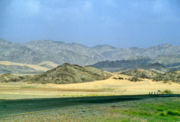
In 619, both Muhammad's wife Khadijah and his uncle Abu Talib died, and was thus known as the " year of sorrows." With the death of Abu Talib, the leadership of the clan of Banu Hashim was passed to Abu Lahab who was an inveterate enemy of Muhammad. Soon afterwards Abu Lahab withdrew the clan's protection from Muhammad. This placed Muhammad in danger of death since the withdrawal of clan protection implied that the blood revenge for his killing would not be exacted. Muhammad then visited to Ta'if, another important city in Arabia, and tried to find a protector for himself there, but his effort failed and further brought him into physical danger. Muhammad was forced to return to Mecca. A Meccan man named Mut'im b. Adi (and the protection of the tribe of Banu Nawfal) made it possible for him safely to re-enter his native city.
Many people were visiting Mecca on business or as pilgrims to the Kaaba. Muhammad took this opportunity to look for a new home for himself and his followers. After several unsuccessful negotiations, he found hope with some men from Yathrib (later called Medina). The Arab population of Yathrib were somewhat familiar with monotheism because a Jewish community existed in that city.Converts to Islam came from nearly all Arab tribes present in Medina, such that by June of the subsequent year there were seventy-five Muslims coming to Mecca for pilgrimage and to meet Muhammad. Meeting him secretly by night, the group made what was known as the " Second Pledge of al-`Aqaba", or the "Pledge of War" Following the pledges at Aqabah, Muhammad encouraged his followers to emigrate to Yathrib. As before, with the migration to Abyssinia, the Quraysh attempted to stop the emigration. However, almost all Muslims managed to leave.
Isra and Mi'raj
Islamic tradition relates that some time in 620, Muhammad experienced the Isra and Mi'raj, a miraculous journey said to have been accomplished in one night along with the angel Gabriel. In the first part of the journey, the Isra, he is said to have travelled from Mecca to "the farthest mosque" (in Arabic: masjid al-aqsa), which Muslims usually identify with the Al-Aqsa Mosque in Jerusalem. In the second part, the Miraj, Muhammad is said to have toured heaven and hell, and spoken with earlier prophets, such as Abraham, Moses, and Jesus. Ibn Ishaq, author of first biography of Muhammad, presents this event as a spiritual experience while later historians like Al-Tabari and Ibn Kathir present it as a physical journey. Some western scholars of Islam hold that the oldest Muslim tradition identified the journey as one traveled through the heavens from the sacred enclosure at Mecca to the celestial Kaʿba (heavenly prototype of the Kaʿba); but later tradition identified Muhammad's journey from Mecca to the abode of sanctuary (bayt al-maqdis) in Jerusalem.
| Timeline of Muhammad in Medina | |
|---|---|
| Important dates and locations in the life of Muhammad in Medina | |
| c. 618 | Medinan Civil War |
| 622 | Emigrates to Medina ( Hijra) |
| 624 | Battle of Badr: Muslims defeat Meccans |
| 624 | Expulsion of Banu Qaynuqa |
| 625 | Battle of Uhud: Meccans defeat Muslims |
| 625 | Expulsion of Banu Nadir |
| 627 | Battle of the Trench |
| 627 | Demise of Banu Qurayza |
| 628 | Treaty of Hudaybiyyah |
| c. 628 | Gains access to Meccan shrine Kaaba |
| 628 | Conquest of the Khaybar oasis |
| 629 | First hajj pilgrimage |
| 629 | Attack on Byzantine Empire fails: Battle of Mu'tah |
| 630 | Bloodless conquest of Mecca |
| c. 630 | Battle of Hunayn |
| c. 630 | Siege of Ta'if |
| c. 631 | Rules most of the Arabian peninsula |
| c. 632 | Attacks the Ghassanids: Tabuk |
| 632 | Farewell hajj pilgrimage |
| 632 | Death ( June 8): Medina |
Muhammad in Medina
Hijra
A delegation from Medina, consisting of the representatives of the twelve important clans of Medina, invited Muhammad as a neutral outsider to Medina to serve as the chief arbitrator for the entire community. There was fighting in Yathrib mainly involving its Arab and Jewish inhabitants for around a hundred years before 620. The recurring slaughters and disagreements over the resulting claims, especially after the battle of Bu'ath in which all the clans were involved, made it obvious to them that the tribal conceptions of blood-feud and an eye for an eye were no longer workable unless there was one man with authority to adjudicate in disputed cases. The delegation from Medina pledged themselves and their fellow-citizens to accept Muhammad into their community and physically protect him as one of themselves.
Muhammad instructed his followers to emigrate to Medina until virtually all of his followers had left Mecca. Being alarmed at the departure of Muslims, according to the tradition, the Meccans plotted to assassinate Muhammad. With the help of Ali, however, Muhammad fooled the Meccans who were watching him, and secretly slipped away from the town with Abu Bakr. By 622, Muhammad had emigrated to Medina, then known as Yathrib, a large agricultural oasis. Those who had migrated from Mecca along with Muhammad became known as muhajirun (emigrants).
Establishment of a new polity
Among the first things Muhammad did in order to settle down the longstanding grievances among the tribes of Medina was drafting a document known as the Constitution of Medina, "establishing a kind of alliance or federation" among the eight Medinan tribes and Muslim emigrants from Mecca, which specified the rights and duties of all citizens and the relationship of the different communities in Medina (including that of the Muslim community to other communities specifically the Jews and other " Peoples of the Book"). The community defined in the Constitution of Medina, Ummah, had a religious outlook but was also shaped by the practical considerations and substantially preserved the legal forms of the old Arab tribes. It effectively established the first Islamic state.
The first group of pagan converts to Islam in Medina were the clans who had not produced great leaders for themselves but had suffered from warlike leaders from other clans. This was followed by the general acceptance of Islam by the pagan population of Medina, apart from some exception. This was according to Ibn Ishaq influenced by the conversion of Sa'd ibn Mu'adh, one of the prominent leaders in Medina to Islam. Those Medinans who converted to Islam and helped the Muslim emigrants find shelter became known as the ansar (helpers). Then Muhammad instituted brotherhood between the emigrants and the helpers and he chose Ali as his own brother.
With the early general conversion of Medinian pagans to Islam, the pagan opposition in Medina was never of prime importance in the affairs of Medina. Those remaining pagans in Medina were very bitter about the advance of Islam. In particular Asma bint Marwan and Abu 'Afak had composed verses taunting and insulting some of the Muslims. These two were assassinated and Muhammad did not disapprove of it. No one dared to take vengeance on them, and some of the members of the clan of Asma bint Marwan who had previously converted to Islam in secret, now professed Islam openly. This marked an end to the overt opposition to Muhammad among the pagans in Medina.
Beginnings of armed conflict
Following the emigration, the Meccans seized the properties of the Muslim emigrants in Mecca. Economically uprooted and with no available profession, the Muslim migrants turned to raiding Meccan caravans for their livelihood, thus initiating armed conflict between the Muslims and Mecca. Muhammad delivered Qur'anic verses permitting the Muslims to fight the Meccans (see Qur'an 22:39–40). These attacks pressured Mecca by interfering with trade, and allowed the Muslims to acquire wealth, power and prestige while working toward their ultimate goal of inducing Mecca's submission to the new faith. In March of 624, Muhammad led some three hundred warriors in a raid on a Meccan merchant caravan. The Muslims set an ambush for the Meccans at Badr. Aware of the plan, the Meccan caravan eluded Muslims. Meanwhile, a force from Mecca was sent to protect the caravan, continuing forward to confront the Muslims upon hearing that the caravan was safe. The battle of Badr began in March of 624. Though outnumbered more than three to one, the Muslims won the battle, killing at least forty-five Meccans with only fourteen Muslims dead. They had also succeeded in killing many of the Meccan leaders, including Abu Jahl. Seventy prisoners had been acquired, many of whom were soon ransomed in return for wealth or freed. Muhammad and his followers saw in the victory a confirmation of their faith. The Qur'anic verses of this period, unlike the Meccan ones, dealt with practical problems of government and issues like the distribution of spoils.
Muhammad expelled from Medina the Banu Qaynuqa, one of the three main Jewish tribes. Following the battle of Badr, Muhammad also made mutual-aid alliances with a number of Bedouin tribes to protect his community from attacks from the northern part of Hijaz.
Conflict with Mecca
The attack at Badr committed Muhammad to total war with Meccans, who were now anxious to avenge their defeat. To maintain their economic prosperity, the Meccans needed to restore their prestige, which had been lost at Badr. In the ensuing months, Muhammad led expeditions on tribes allied with Mecca and sent out a raid on a Meccan caravan. Abu Sufyan subsequently gathered an army of three thousand men and set out for an attack on Medina.
A scout alerted Muhammad of the Meccan army's presence and numbers a day later. The next morning, at the Muslim conference of war, there was dispute over how best to repel the Meccans. Muhammad and many of the senior figures suggested that it would be safer to fight within Medina and take advantage of its heavily fortified strongholds. Younger Muslims argued that the Meccans were destroying their crops, and that huddling in the strongholds would destroy Muslim prestige. Muhammad eventually conceded to the wishes of the latter, and readied the Muslim force for battle. Thus, Muhammad led his force outside to the mountain of Uhud (where the Meccans had camped) and fought the Battle of Uhud on March 23. Although the Muslim army had the best of the early encounters, indiscipline on the part of strategically placed archers led to a Muslim defeat, with 75 Muslims killed including Hamza, Muhammad's uncle and one of the best known martyrs in the Muslim tradition. The Meccans did not pursue the Muslims further, but marched back to Mecca declaring victory. They were not entirely successful, however, as they had failed to achieve their aim of destroying the Muslims completely. The Muslims buried the dead, and returned to Medina that evening. Questions accumulated as to the reasons for the loss, and Muhammad subsequently delivered Qur'anic verses [Qur'an 3:152] which indicated that their defeat was partly a punishment for disobedience and partly a test for steadfastness.
Abu Sufyan now directed his efforts towards another attack on Medina. He attracted the support of nomadic tribes to the north and east of Medina, using propaganda about Muhammad's weakness, promises of booty, memories of the prestige of Quraysh and use of bribes. Muhammad's policy was now to prevent alliances against him as much as he could. Whenever alliances of tribesmen against Medina were formed, he sent out an expedition to break them up. When Muhammad heard of men massing with hostile intentions against Medina, he reacted with severity. One example is the assassination of Ka'b ibn al-Ashraf, a member of the Jewish tribe of Banu Nadir who had gone to Mecca and written poems that had helped rouse the Meccans' grief, anger and desire for revenge after the battle of Badr. Around a year later, Muhammad expelled the Jewish Banu Nadir from Medina. Muhammad's attempts to prevent formation of a confederation against him were unsuccessful, though he was able to increase his own forces and stop many potential tribes from joining his enemies.
Siege of Medina
Abu Sufyan, the military leader of Quraysh, with the help of Banu Nadir, the exiled Jewish tribe from Medina, had mustered a force of size 10,000 men. Muhammad was able to prepare a force of about 3000 men. He had however adopted a new form of defense, unknown in Arabia at that time: Muslims had dug a trench wherever Medina lay open to cavalry attack. The idea is credited to a Persian convert to Islam, Salman the Persian. The siege of Medina began on 31 March 627 and lasted for two weeks. Abu Sufyan's troops were unprepared for the fortifications they were confronted with, and after an ineffectual siege lasting several weeks, the coalition decided to go home. The Qur'an discusses this battle in verses Qur'an 33:9-33:27.
During the battle, the Jewish tribe of Banu Qurayza, located at the south of Medina, had entered into negotiations with Meccan forces to revolt against Muhammad. Although they were swayed by suggestions that Muhammad was sure to be overwhelmed, they desired reassurance in case the confederacy was unable to destroy him. No agreement was reached after the prolonged negotiations, in part due to sabotage attempts by Muhammad's scouts. After the retreat of the coalition, the Muslims accused the Banu Qurayza of treachery and besieged them in their forts for 25 days. The Banu Qurayza eventually surrendered and all the men, apart from a few who converted to Islam, were beheaded, while the women and children were enslaved. In the siege of Medina, the Meccans had exerted their utmost strength towards the destruction of the Muslim community. Their failure resulted in a significant loss of prestige; their trade with Syria was gone. Following the battle of the trench, Muhammad made two expeditions to the north which ended without any fighting. While returning from one of these two expeditions (or some years earlier according to other early accounts), an accusation of adultery was made against Aisha, Muhammad's wife. Aisha was exonerated from the accusations when Muhammad announced that he had received a revelation confirming Aisha's innocence and directing that charges of adultery be supported by four eyewitnesses.
Truce of Hudaybiyya
Although Muhammad had already delivered Qur'anic verses commanding the Hajj, the Muslims had not performed it due to the enmity of the Quraysh. In the month of Shawwal 628, Muhammad ordered his followers to obtain sacrificial animals and to make preparations for a pilgrimage ( umrah) to Mecca, saying that God had promised him the fulfillment of this goal in a vision where he was shaving his head after the completion of the Hajj. Upon hearing of the approaching 1,400 Muslims, the Quraysh sent out a force of 200 cavalry to halt them. Muhammad evaded them by taking a more difficult route, thereby reaching al-Hudaybiyya, just outside of Mecca. According to Watt, although Muhammad's decision to make the pilgrimage was based on his dream, he was at the same time demonstrating to the pagan Meccans that Islam does not threaten the prestige of their sanctuary, and that Islam was an Arabian religion.
Negotiations commenced with emissaries going to and from Mecca. While these continued, rumors spread that one of the Muslim negotiators, Uthman bin al-Affan, had been killed by the Quraysh. Muhammad responded by calling upon the pilgrims to make a pledge not to flee (or to stick with Muhammad, whatever decision he made) if the situation descended into war with Mecca. This pledge became known as the "Pledge of Acceptance" (Arabic: بيعة الرضوان , bay'at al-ridhwān) or the " Pledge under the Tree." News of Uthman's safety, however, allowed for negotiations to continue, and a treaty scheduled to last ten years was eventually signed between the Muslims and Quraysh. The main points of treaty included the cessation of hostilities; the deferral of Muhammad's pilgrimage to the following year; and an agreement to send back any Meccan who had gone to Medina without the permission of his or her protector.
Many Muslims were not satisfied with the terms of the treaty. However, the Qur'anic sura "Al-Fath" (The Victory) (Qur'an 48:1-29) assured the Muslims that the expedition from which they were now returning must be considered a victorious one. It was only later that Muhammad's followers would realise the benefit behind this treaty. These benefits, according to Welch, included the inducing of the Meccans to recognise Muhammad as an equal; a cessation of military activity posing well for the future; and gaining the admiration of Meccans who were impressed by the incorporation of the pilgrimage rituals.
After signing the truce, Muhammad made an expedition against the Jewish oasis of Khaybar, known as the Battle of Khaybar. This was possibly due to it housing the Banu Nadir, who were inciting hostilities against Muhammad, or to regain some prestige to deflect from what appeared to some Muslims as the inconclusive result of the truce of Hudaybiyya. According to Muslim tradition, Muhammad also sent letters to many rulers of the world, asking them to convert to Islam (the exact date are given variously in the sources). Hence he sent messengers (with letters) to Heraclius of the Byzantine Empire (the eastern Roman Empire), Khosrau of Persia, the chief of Yemen and to some others. In the years following the truce of Hudaybiyya, Muhammad sent his forces against the Arabs on Transjordanian Byzantine soil in the Battle of Mu'tah, in which the Muslims were defeated.
Final years
Conquest of Mecca
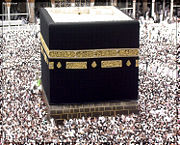
The truce of Hudaybiyya had been enforced for two years. The tribe of Khuz'aah had a friendly relationship with Muhammad, while on the other hand their enemies, the Banu Bakr, had an alliance with the Meccans. A clan of the Bakr made a night raid against the Khuz'aah, killing a few of them. The Meccans helped their allies (i.e., the Banu Bakr) with weapons and, according to some sources, a few Meccans also took part in the fighting. After this event, Muhammad sent a message to Mecca with three conditions, asking them to accept one of them. These were that either the Meccans paid blood money for those slain among the Khuza'ah tribe; or, that they should disavow themselves of the Banu Bakr; or, that they should declare the truce of Hudaybiyya null.
The Meccans replied that they would accept only the last condition. However, soon they realized their mistake and sent Abu Safyan to renew the Hudaybiyya treaty, but now his request was declined by Muhammad. Muhammad began to prepare for a campaign. In 630, Muhammad marched on Mecca with an enormous force, said to number more than ten thousand men. With minimal casualties, Muhammad took control of Mecca. He declared an amnesty for past offences, except for ten men and women who had mocked and made fun of him in songs and verses. Some of these were later pardoned. Most Meccans converted to Islam, and Muhammad subsequently destroyed all of the statues of Arabian gods in and around the Kaaba, without any exception. The Qur'an discusses the conquest of Mecca in verses Qur'an 110:1-110:3.
Conquest of Arabia
Soon after the conquest of Mecca, Muhammad was alarmed by a military threat from the confederate tribes of Hawazin who were collecting an army twice the size of Muhammad's. Hawzain were old enemies of Meccans. They were joined by the tribe of Thaqif inhabiting in the city of Ta’if who had adopted an anti-Meccan policy due to the decline of the prestige of Meccans. Muhammad defeated the Hawazin and Thaqif tribes in the battle of Hunayn.
In the same year, Muhammad made the expedition of Tabuk against northern Arabia because of their previous defeat at the Battle of Mu'tah as well as the reports of the hostile attitude adopted against Muslims. Although Muhammad did not make contact with hostile forces at Tabuk, but he received the submission of some of the local chiefs of the region. A year after the battle of Tabuk, the tribe of Thaqif inhabiting in the city of Ta’if sent emissaries to Medina to surrender to Muhammad and adopt Islam. Many bedouins submitted to Muhammad in order to be safe against his attacks and to benefit from the booties of the wars. The bedouins however were alien to the system of Islam and wanted to maintain their independence, their established code of virtue and their ancestral traditions. Muhammad, thus required of them a military and political agreement according to which they "acknowledge the suzerainty of Medina, to refrain from attack on the Muslims and their allies, and to pay the Zakat, the Muslim religious levy."
Farewell pilgrimage and death
At the end of the tenth year after the migration to Medina, Muhammad carried through his first truly Islamic pilgrimage thereby teaching his followers the regulations of the various ceremonies of the annual Great Pilgrimage (hajj).
After completing the pilgrimage rituals, Muhammad delivered a famous speech known as the Farewell Speech (Arabic: Khutbat al-Wadaa'). In this sermon, Muhammad advised his follower not to follow certain pre-Islamic customs such as adding intercalary months to align the lunar calendar with the solar calendar. Muhammad abolished all old blood feuds and disputes based on the former tribal system and asked for all old pledges to be returned as implications of the creation of the new Islamic community. Commenting on the vulnerability of women in his society, Muhammed asked his male followers to “Be good to women; for they are powerless captives (awan) in your households. You took them in God’s trust, and legitimated your sexual relations with the Word of God, so come to your senses people, and hear my words ...”. He also told them that they were entitled to discipline their wives but should do so with kindness. Muhammad also addressed the issue of inheritance by forbidding false claims of paternity or of a client relationship to the deceased and also forbidding his followers to leave their wealth to a testamentary heir. He also upheld the sacredness of four lunar months in each year. According to Sunni Tafsir the following Qur'anic verse was delivered in this incident: “Today I have perfected your religion, and completed my favours for you and chosen Islam as a religion for you.”(Qur'an 5:3) while according to Shia ones it refers to appointment of Ali ibn Abi Talib as the successor of Muhammad in pond of Khumm which happened while Muslims returned from Mecca to Medina, few days later.
A few months after the farewell pilgrimage, Muhammad fell ill and suffered for several days with head pain and weakness. He succumbed on Monday, June 8, 632, in the city of Medina. He is buried in his tomb (which previously was in his wife Aisha's house) which is now housed within Mosque of the Prophet in Medina. Next to Muhammad's tomb, there is another empty tomb that Muslims believe awaits Jesus.
Aftermath
Muhammad united the tribes of Arabia into a singular Arab Muslim religious polity in the last years of his life. With Muhammad's death, disagreement broke out over who would succeed him as leader of the Muslim community. Umar ibn al-Khattab, a prominent companion of Muhammad, nominated Abu Bakr, who was Muhammad's friend and collaborator. Others added their support and Abu Bakr was made the first caliph. This choice was disputed by some of Muhammad's companions, who held that Ali ibn Abi Talib, his cousin and son-in-law, had been designated the successor by Muhammad at Ghadir Khumm. Abu Bakr's immediate task was to make an expedition against the Byzantine (or Eastern Roman Empire) forces because of the previous defeat, although he first had to put down a rebellion by Arab tribes in an episode called by later Muslim historians as the Ridda wars, or "Wars of Apostasy".
The pre-Islamic Middle East was dominated by the Byzantine and Sassanian empires. The Roman-Persian Wars between the two had devastated the inhabitants, making the empires unpopular amongst the local tribes. Furthermore, most of the Christian Churches in the lands to be conquered by Muslims such as Nestorians, Monophysites, Jacobites and Copts were under pressure from the Christian Orthodoxy who deemed them as heretics. Within only a decade, Muslims conquered Mesopotamia and Persia, Roman Syria and Roman Egypt. and established Rashidun empire.
Wives and children
Muhammad's life is traditionally defined into two periods: pre-hijra (emigration) in Mecca, a city in northern Arabia, from the year 570 to 622, and post-hijra in Medina, from 622 until his death in 632. Muhammad is said to have had thirteen wives or concubines (there are differing accounts on the status of some of them as wife or concubine) All but two of his marriages were contracted after the migration to Medina.
At the age of 25, Muhammad married Khadijah bint Khuwaylid. The marriage lasted for 25 years and was a happy one. Muhammad relied upon Khadija in many ways and did not enter into marriage with another woman during this marriage. After the death of Khadija, it was suggested to Muhammad by Khawla bint Hakim, that he should marry Sawda bint Zama, a Muslim widow, or Aisha, the young daughter of Abu Bakr, whose previous betrothal had not been honored. Muhammad is said to have asked her to arrange for him to marry both. Later, Muhammad married additional wives nine of whom survived him. Aisha, who became known as Muhammad's favourite wife in Sunni tradition, survived him by many decades and was instrumental in helping to bring together the scattered sayings of Muhammad that would form the Hadith literature for the Sunni branch of Islam. Muhammad did his own household chores, helped out with the housework, such preparing food, sewing clothes, and repairing shoes. Muhammad is also said to had accustomed his wives to dialogue; he listened to their advice, and the wives debated and even argued with him.
Khadijah is said to have borne Muhammad four daughters ( Ruqayyah bint Muhammad, Umm Kulthum bint Muhammad, Zainab bint Muhammad, Fatimah Zahra) and two sons ( Abd-Allah ibn Muhammad and Qasim ibn Muhammad), though all except two of his daughters, Fatimah and Zainab died before him. Some Shi'a scholars however hold that Fatimah was Muhammad's only daughter. Maria al-Qibtiyya bore him a son named Ibrahim ibn Muhammad, but the child died when he was two years old.
Muhammad's descendants through Fatimah are known as sharifs, syeds or sayyids. These are honorific titles in Arabic, sharif meaning 'noble' and sayed or sayyid meaning 'lord' or 'sir'. As Muhammad's only descendants, they are respected by both Sunni and Shi'a, though the Shi'as place much more emphasis and value on their distinction.
Legacy

Reforms
According to William Montgomery Watt, for Muhammad, religion was not a private and individual matter but rather “the total response of his personality to the total situation in which he found himself. He was responding [not only]… to the religious and intellectual aspects of the situation but also to the economic, social, and political pressures to which contemporary Mecca was subject." Bernard Lewis says that there are two important political traditions in Islam – one that views Muhammad as a statesman in Medina, and another that views him as a rebel in Mecca. He sees Islam itself as a type of revolution that greatly changed the societies into which the new religion was brought.
Historians generally agree that Islamic social reforms in areas such as social security, family structure, slavery and the rights of women and children improved on what was present in existing Arab society. For example, according to Lewis, Islam "from the first denounced aristocratic privilege, rejected hierarchy, and adopted a formula of the career open to the talents" Muhammad's message transformed the society and moral order of life in the Arabian Peninsula through reorientation of society as regards to identity, world view, and the hierarchy of values. Economic reforms addressed the plight of the poor, which was becoming an issue in pre-Islamic Mecca. The Qur'an requires payment of an alms tax ( zakat) for the benefit of the poor, and as Muhammad's position grew in power he demanded that those tribes who wanted to ally with him implement the zakat in particular.
Sunnah
The Sunnah represents the actions and sayings of Muhammad (preserved in reports known as Hadith), and covers a broad array of activities and beliefs ranging from religious rituals, personal hygiene, burial of the dead to the mystical questions involving the love between humans and God. The Sunnah is considered as a model of emulation for pious Muslims and has to a great degree influenced the Muslim culture. The greeting that Muhammad taught Muslims to offer each other, “may peace be upon you” (Arabic: as-salamu `alaykum) is used by Muslims throughout the world. Much of the details of the major Islamic religious rituals such as daily prayers, the fasting, the annual pilgrimage are only found in the Sunnah and not the Qur'an.
The Sunnah also played a major role in the development of the Islamic sciences. It contributed much to the development of the Islamic law particularly from the end of the first Islamic century onwards. Muslim mystics, known as sufis, who were seeking for the inner meaning of the Qur'an and the inner nature of Muhammad, viewed the prophet of Islam not only as a prophet but also as a perfect saint. Sufi orders trace their chain of spiritual descent back to Muhammad.
Traditional views
Muslim veneration
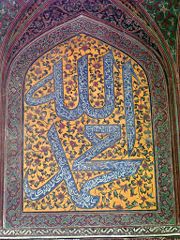
Following the attestation to the oneness of God, the belief in Muhammad's prophethood is the main part of Islamic faith. Every Muslim proclaims in Shahadah that "I testify that Muhammad is a messenger of Allah". The Shahadah is the basic creed or tenet of Islam. Ideally, it is the first words a newborn will hear, and children are taught as soon as they are able to understand it and it will be recited when they die. Muslims must repeat the shahadah in Adan and prayer, and non-Muslims wishing to convert to Islam are required to recite the creed.
Muslims have traditionally expressed love and veneration for Muhammad. Stories of Muhammad's life, his intercession and of his miracles (particularly " Splitting of the moon") have permeated popular Muslim thought and poetry. The Qur'an refers to Muhammad as "a mercy (rahmat) to the worlds" (Qur'an 21:107). The association of rain with mercy in Oriental countries has led to imagining Muhammad as a rain cloud dispensing blessing and stretching over lands, reviving the dead hearts, just as rain revives the seemingly dead earth (see for example the Sindhi poem of Shah ʿAbd al-Latif). Muhammad's birthday is celebrated as a major feast throughout the Islamic world, excluding the Wahhabi-dominated Saudi Arabia where these public celebrations are discouraged. Muslims experience Muhammad as a living reality, believing in his ongoing significance to human beings as well as animals and plants.
According to historian Denis Gril, the Qur'an does not overtly describe Muhammad performing miracles, and the supreme miracle of Muhammad is finally identified with the Qur’an itself. However, Muslim tradition credits Muhammad with several supernatural events. For example, many Muslim commentators and some Western scholars have interpreted the Surah 54:1-2 as referring to Muhammad splitting the Moon in view of the Quraysh when they had begun to persecute his followers.
When Muslims say or write the name of Muhammad or any other prophet in Islam, they usually follow it with Peace be upon him (Arabic: sallAllahu `alayhi wa sallam).
European and Western views
The biographical knowledge about Muhammad in the learned, Latin circles of the Middle Ages in Europe, was remarkably precise to some extent and a good amount of concrete data about his life was known. Learned European circles of the time interpreted the data in such a way that Muhammad was viewed as a charlatan who, being driven by ambition and eagerness for power, seduced the Saracens into his submission under a religious guise. This knowledge about Muhammad's life in the Latin theological texts was not reflected in the popular literature of the Middle Ages where Muhammad was viewed as an idol or one of the heathen gods. Some medieval Christians said he had died in 666, alluding to the number of the beast, instead of 632; others changed his name from Muhammad to Mahound, the "devil incarnate". Bernard Lewis writes "The development of the concept of Mahound started with considering Muhammad as a kind of demon or false god worshipped with Apollyon and Termagant in an unholy trinity." A later medieval works, Livre dou Tresor represents Muhammad as a former monk and cardinal. Dante's Divine Comedy (Canto XXVIII), puts Muhammad, together with Ali, in Hell "among the sowers of discord and the schismatics, being lacerated by devils again and again."
After the reformation, Muhammad was no longer viewed as a god or idol, but as a cunning, ambitious, and self-seeking impostor. Guillaume Postel was among the first to present a more positive view of Muhammad. Boulainvilliers described Muhammad as a gifted political leader and a just lawmaker. Gottfried Leibniz praised Muhammad because "he did not deviate from the natural religion". Friedrich Bodenstedt (1851) described Muhammad as "an ominous destroyer and a prophet of murder." Later Western works, many of which, from the 18th century onward, distanced themselves from the polemical histories of earlier Christian authors. These more historically oriented treatments, which generally reject the prophethood of Muhammad, are coloured by the Western philosophical and theological framework of their authors. Many of these studies reflect much historical research, and most pay more attention to human, social, economic, and political factors than to religious, theological, and spiritual matters.
It was not until the latter part of the 20th century that Western authors combined rigorous scholarship as understood in the modern West with empathy toward the subject at hand and, especially, awareness of the religious and spiritual realities involved in the study of the life of the founder of a major world religion. According to Watt and Richard Bell, recent writers have generally dismissed the idea that Muhammad deliberately deceived his followers, arguing that Muhammad “was absolutely sincere and acted in complete good faith”. Watt says that sincerity does not directly imply correctness: In contemporary terms, Muhammad might have mistaken for divine revelation his own unconscious. Although Muhammad's image in the west is much less unfavorable than in the past, prejudicial folk beliefs remain.
Watt and Lewis argue that viewing Muhammad as a self-seeking imposter makes it impossible to understand the development of Islam. Welch holds that Muhammad was able to be so influential and successful because of his firm belief in his vocation. Muhammad’s readiness to endure hardship for his cause when there seemed to be no rational basis for hope shows his sincerity.
Views according to Hindu Scriptures
Muhammad is mentioned by name in the Hindu scriptures in several aspects. Muhammad appears with the names Amad and Mahāmad. Thus, Muhammad is mentioned, as Mahāmad (the ultimate Amad), in III.3.3.5-27 of the Bhavishya Purana text. The passage is aware of Muhammad's Arabian origin, and portrays him as an epithet of Brahma. It states that Muhammad will redevelop religion for the Arya Dharma people, and will destroy the worship of idols. It then refers to the other religions as Malechhas (non-Aryan) who have brought a powerful enemy Tripurāsura whom Mahamad has brought a great blessing to kill. It then explains the Malechhas religion as dharmadūṣaka ("polluter of righteousness"), a preceptor of paiśācadharma ("ghoulish religion"), that spoils the land of the Arabs.
In a variety of views of Hinduism held on Muhammad, scholars assert that the prophet was none else than the Narashan rishi of the Vedas One of the prominent Vaishnava proponents, A.C. Bhaktivedanta Swami Prabhupada maintained that Mohammad and Jesus, were empowered representatives of God, saktiavesa avataras. Some translate the phrase "the last prophet", suggesting that Vedic deity Agni is none other but Muhammad. In 1926 Siddiq Hussain's two-volume Kannada book, Ja at Guru Sarwar-i 'Alam, argued that the Muhammad was actually Kalki Avatar whose arrival had been predicted in the Hindu scriptures. On the other hand Mirza Ghulani Ahmad argued that Rama and Krishna were prophets of God who had foretold the arrival of Muhammad as God's last law-bearing prophet.
Muhammad is also linked to the passage of the Rig Veda declaring that Narashan rishi will arrive as the "last divine messenger" (antim deva duta), who shall "dispel all darkness" and "conquer death". Bahá'ís venerate Muhammad as one of a number of prophets or " Manifestations of God", but consider his teachings to have been superseded by those of Bahá'u'lláh. The Church of Jesus Christ of Latter-day Saints considers Muhammad, along with Confucius, the Reformers, as well as philosophers including Socrates, Plato, and others, to have received a portion of God's light and that moral truths were given to them to enlighten nations and bring a higher level of understanding to individuals. Guru Nanak, the founder of Sikhism, viewed Muhammad as an agent of the Hindu supreme being Brahman.
